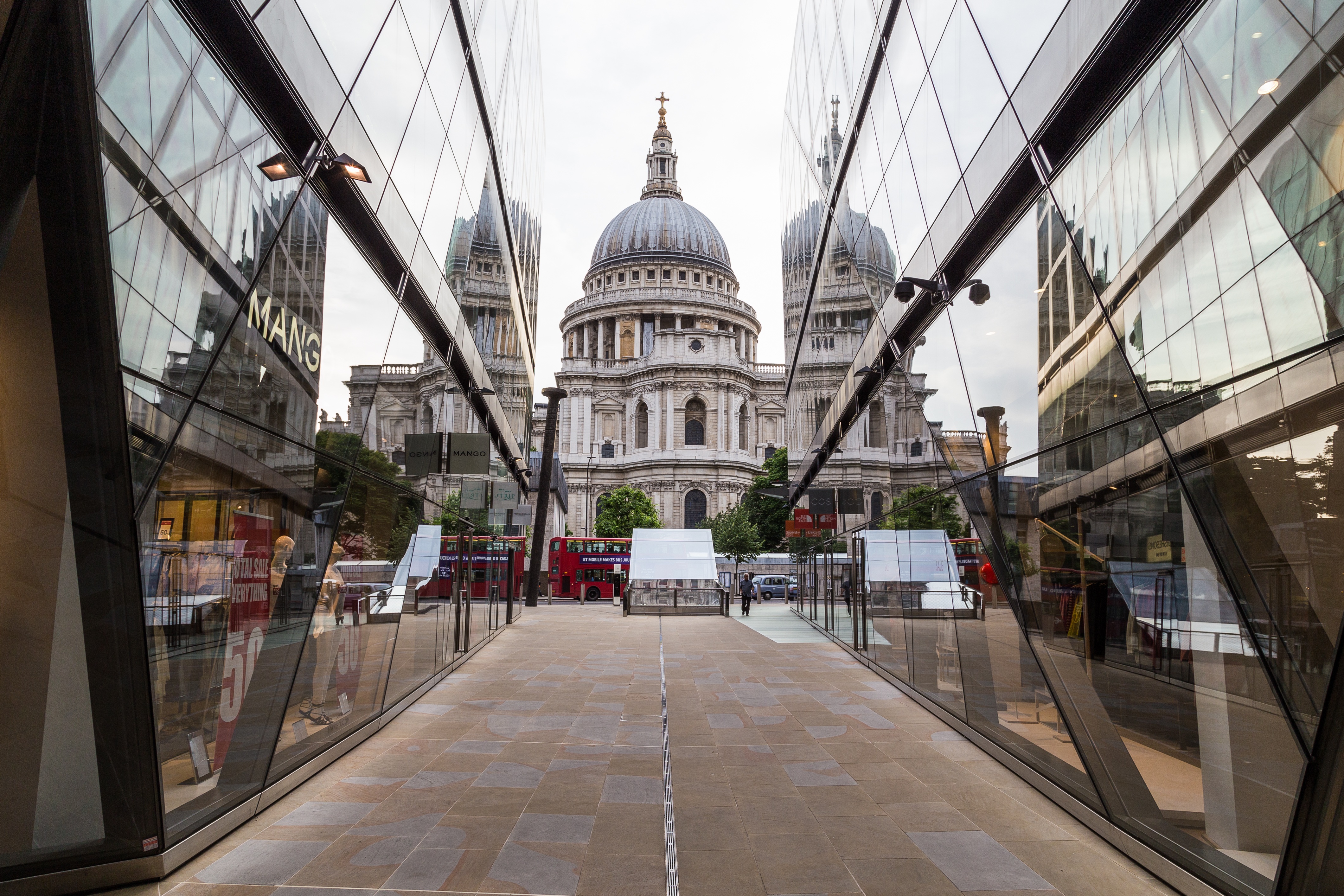
 PIN
St. Pauls, London`s Church
PIN
St. Pauls, London`s Church
Wren`s Masterpiece
Built in 1675, after its predecessor was destroyed by the Great Fire of London St. Pauls Cathedral is a monument to the renaissance which followed that cataclysmic event. Built by Christopher Wren, then an astronomer, the Cathedral has been a magnet attracting London`s visitors since its inception.
St Paul`s Cathedral is an Anglican cathedral and is London`s mother church and the seat of the Bishop of London and proudly sits on Ludgate Hill on the highest point of the City. It is a Grade 1 listed building and its dome is a prominent feature of London`s skyline where it competes with contemporary modern buildings to great affect.
History
After being destroyed four times over past centuries the ‘new’ church was designedand completed by Christopher Wren in 1675 and has survived through three centuries. Its dome is the second largest in the world at 366 feet high.
The first church located on Ludgate Hill was built in 604 AD, dedicated to the apostle Paul. This wooden building was established by King Ethelbert of Kent, and was repeatedly damaged and destroyed. After being burned down and rebuilt from 675 AD to 685 AD, the second cathedral fell to the Vikings during a periodic invasions in 962 and was continually ransacked. Rebuilt in the same year and burnt down once again, the fourth St Paul was built in 1087 (often referred to as the old St Paul). During this time, the style of architecture changed from Romanesque to Gothic. The cathedral spire was the first to be completed, in 1148, enabling the cathedral to return to function as a place of worship. Taking over 150 years to be completed, the final touches were applied in 1240. A new gothic quire was added in 1313, making the church the third longest in Europe, at 596 feet. When the spire was completed the following year, St Paul also became the tallest church in Europe at that time, with a height of 489 feet.
By the 16th century St Paul’s was starting to self-destruct. The spire was destroyed by lightning in 1561, and during the Civil War the church fell into a serious state of disrepair. The Great Fire of London, in 1666, destroyed the cathedral and led to the decision to build an entirely new church. After nine years of planning by Sir Christopher Wren – scientist, mathematician and Britain’s pre-eminent architect – St Paul’s rebuilding commenced. The ‘completion of decoration’ in the 19th century added vivid mosaic and stained glass.
After the depredations of time and the close attention of the Luftwaffe a 15 year restoration project started, with extensive copper, lead and slate renovation work, and was completed on 15 June 2011.
Opening Hours
8.30 - 4.30 daily
TripTide Thoughts
This splendid building consumed the greater parter of our day and there was still more to see. It is a major part of the great story of London and should not be missed.
Tags
- Museum
- , Culture
- , close to river
- , Art
- , family
- , City Central
- , churches
- , landmark
Location
St. Pauls Cathdral, St. Pauls Churchyard, London, EC4M 8AD (View on Google Maps)London's Mother Church
.jpg)


 Facebook
Facebook Twitter
Twitter Tumblr
Tumblr Google+
Google+ Pinterest
Pinterest LinkedIn
LinkedIn







